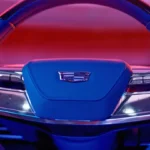As we’ve previously reported, the automotive sector is pushing the frontier of metal 3D printing by fabricating prototypes, production jigs and fixtures, and end-use parts for automobiles around the world. Exco Engineering is especially ambitious as they 3D print diecast inserts and have been experimenting with printed water jackets. These components have to withstand incredibly harsh environments so Exco had to blaze this AM trail.
Wes Byleveld is the Director of Additive Manufacturing for Exco Engineering, which is the largest high-pressure diecast tool builder in North America. While they don’t make engines themselves, they make the dies for engine components; they can weigh hundreds of thousands of pounds each. Exco is 3D printing the die inserts that go into the cast molds. Inserts are typically machined from H13 tool steel because they bear the brunt of the casting process, which involves high-pressure molten aluminum being injected into the mold.
Years ago, Byleveld sent water jackets to several metal AM companies to find out if they could be printed. “If you can build this part for us, we’ll buy your machine,” Byleveld said. EOS was the only company that took it on and said, “Yes, we’ll give it a try and we’re going to succeed no matter what it takes.” Exco ended up buying an EOS M 400 in 2015 to develop a path to printed die components.

Forged H13 Versus 3D Printed H13
Material performance was the main obstacle to overcome. 3D printed H13 tool steel doesn’t have the same properties as forged H13 steel as Byleveld explains, “It’s extremely hard to produce additively. When you look at some of the parts printed with H13, they’re cracked and full of porosity. When you’re injecting metal at 13,000 PSI in 20 milliseconds, and you have a waterline 1 mm from the surface, if that water line bursts during metal injection it blows open the machine. It’s a big safety concern for me.”
We’ve printed die inserts from maraging steel that have lasted more than 150,000 cycles.Wes Byleveld, Director of Additive Manufacturing for Exco Engineering
The Solution: 3D Printed Maraging Steel
Instead of trying to develop a new material, they decided to look back. In the 1960s, maraging steel was developed for high-pressure applications like rocket motor casings. So Exco commissioned a few feasibility studies with a local university and landed on a proprietary heat-treating process that imparts 3D printed maraging steel with mechanical properties that meet or exceed those of H13 tool steel. “The material lasts,” he says. “We’ve printed die inserts from maraging steel that have lasted more than 150,000 cycles.”
Achieving a high cycle count is important because a printed insert cost several times more than a machined insert; savings can still be achieved if the longevity is significantly improved. But there are other costs to consider, such as cycle times, which can be reduced with better conformal cooling patterns enabled through AM. Additionally, downtime is drastically reduced with printed inserts as machining is incredibly time consuming. Those individual savings add up to some serious coinage over the lifetime of a mold.
All of those factors also apply to the printed water jackets that Exco is developing. They’re currently working with one of the Big Three automakers to test their printed water jackets. If the tests go well, automakers will have yet another avenue to increase production efficiency with AM.
For further reading you can find the full interview with Wes Byleveld here.










